Glen Helen began when alumnus Hugh Taylor Birch donated a wooded glen to Antioch College in 1925 in memory of his daughter, Helen. The college continued to acquire adjacent land over the years, and the Glen Helen Nature Preserve now encompasses 1000 acres and 25 miles of hiking trails. The preserve is managed by the Glen Helen Ecology Institute. Within the preserve there is a yellow spring that has given its name to the town where the college and preserve are located. The preserve also includes limestone cliffs, waterfalls, 400-year old trees, 69 species of wildflowers, 153 species of birds, a Hopewell Indian mound and much more.
At a separate entrance to the preserve there is a Raptor Center that admits about 150 to 200 injured birds per year. The Raptor Center is able to rehabilitate about half of these birds to the point where they can be released back to the wild. Birds that are permanently handicapped live in large, outdoor cages on the premises.
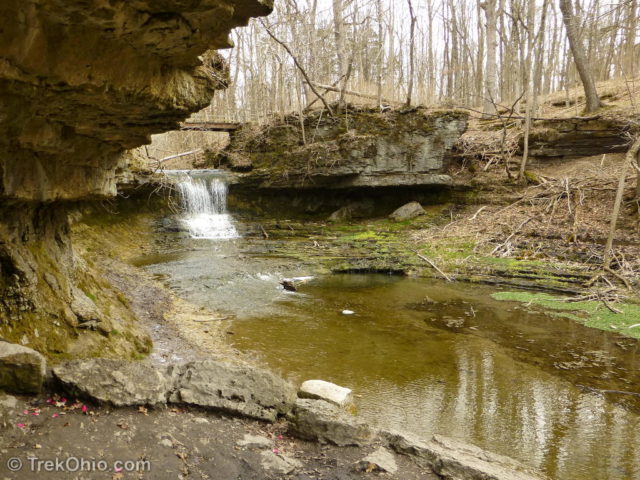
A number of interesting features can be viewed from the Inman Trail whose trailhead is located at the parking lot of the main entrance. After following the trail down to the creek’s flood plain and crossing the creek via a footbridge, we ended up on the east side of the Yellow Springs Creek. A little ways farther to the east, Inman Trail becomes a loop. We turned left (northwards) to follow the loop in a clockwise direction. Shortly after starting our clockwise path we were on the boardwalk below.
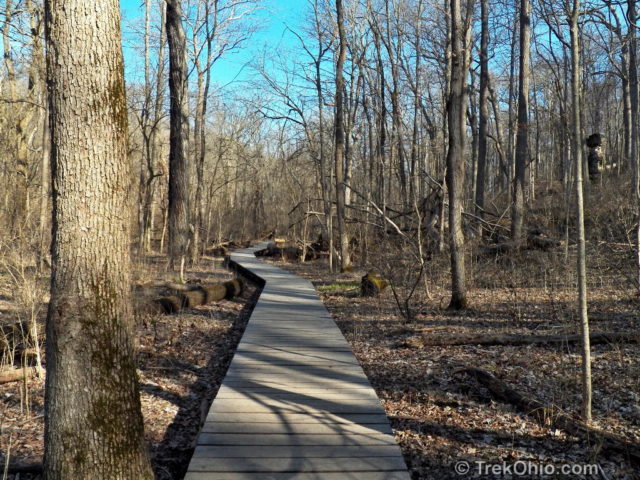
There was a side trail to Pompey’s Pillar, so I scampered up to it for a closer look.
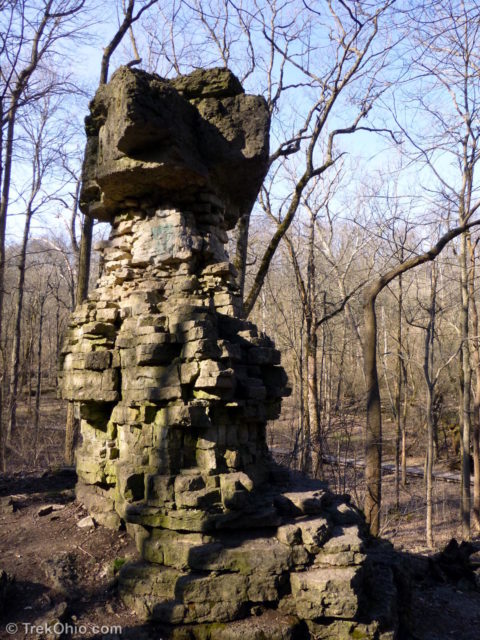
A bit later we came to a boardwalk that juts off Inman Trail to the west. Following it leads to the Talus Trail on the western side of Yellow Springs Creek from which we started our hike. We disregarded it and continued our clockwise path on the Inman Trail. Soon afterwards we were within sight of the remnants of an old dam. In the early 1900’s there was a resort in Yellow Springs. This dam created a small lake which was used by visitors to the resort for recreational boating and ice skating.
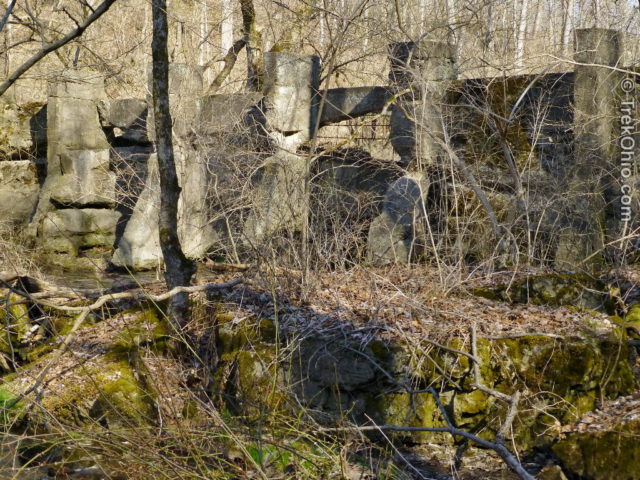
Nearby there is a travertine mound and grotto.
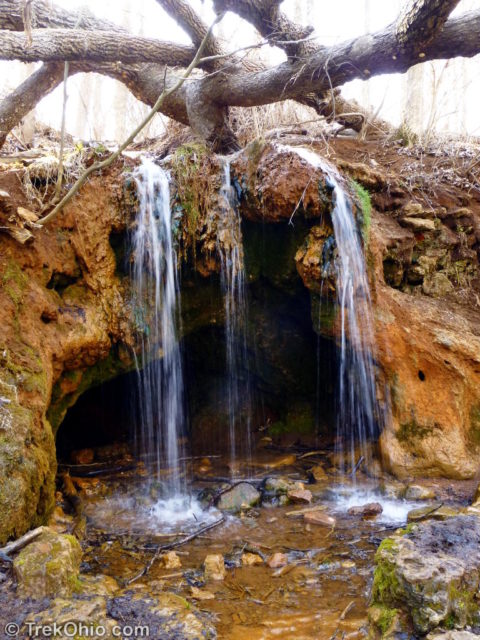
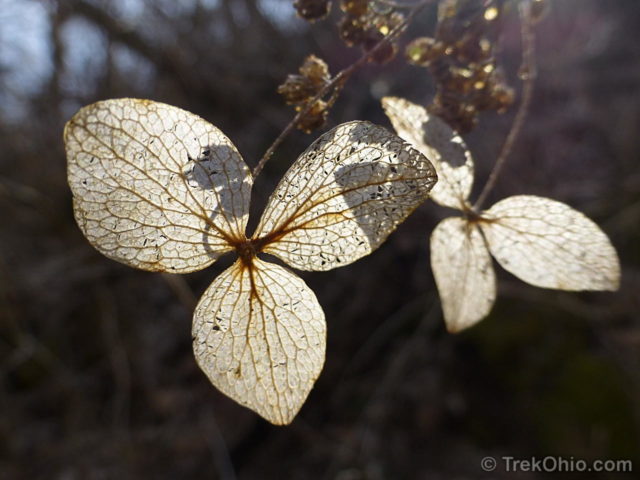
At this point Inman Trail turns to the right (east) and goes upwards. We soon arrived at the Yellow Springs which gives the town its name. Its vivid color is due to the large amount of iron in the soil here.
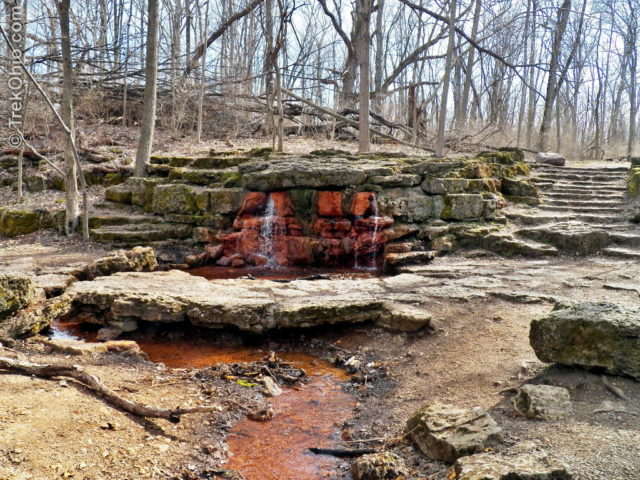
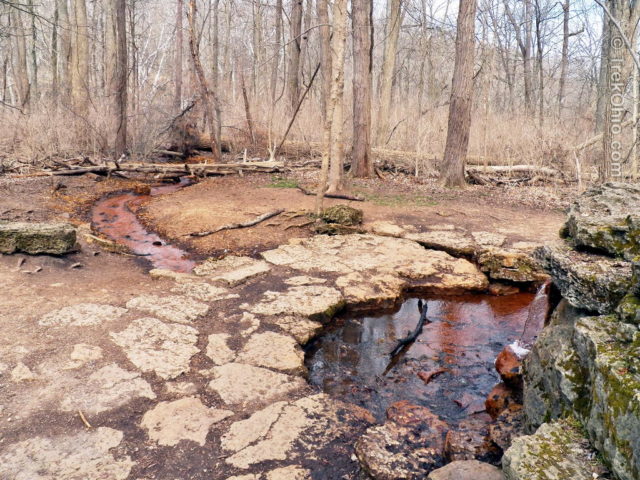
Continuing eastward on the northernmost part of Inman Trail loop, we passed through a woods. A Hopewell Indian mound was in the woods to the south of the trail.
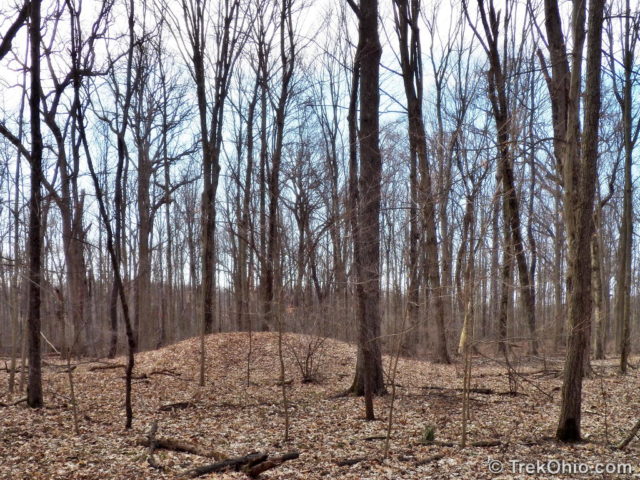
As the Inman Trail loop began to turn southward we came to Helen’s Stone; the land that became the preserve was donated to Antioch College by Hugh Taylor Birch in memory of his daughter, Helen Birch Bartlett. Here’s the stone’s inscription:
“The earth smells old and warm and mellow.
and all things lie at peace.
Too serenely lie here under the white oak tree,
and know the splendid flight of hours
all blue and gay, sun-drenched and still.”
by Helen Birch Bartlett
in memory of whom this glen was presented
to Antioch College in 1929 by her father,
Hugh Taylor Birch
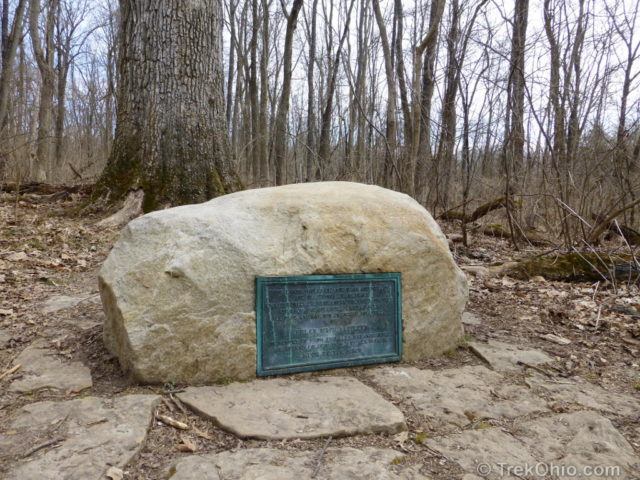
We join other guests at Glen Helen in expressing our gratitude to the Birch family for this wonderful gift.
Shortly beyond Helen’s Stone we approached another creek, known as the Birch Creek. It’s a tributary that flows into Yellow Springs Creek. We arrived at Birch Creek near the waterfall pictured in the topmost photo of this article.
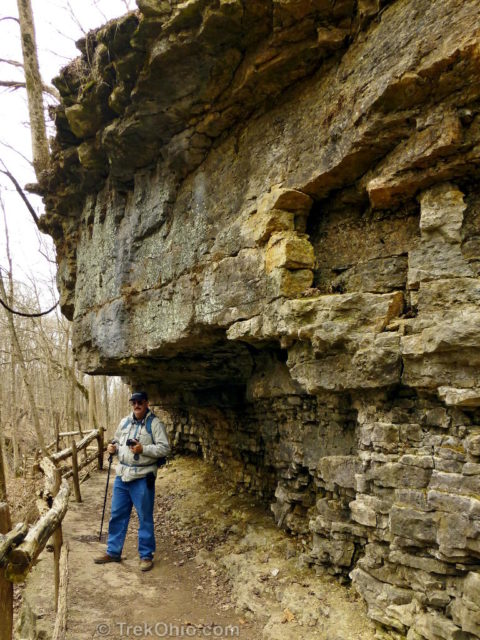
There is a nice vantage point for viewing the falls that’s a bit lower than where Bob is standing in the above photo. After taking in the falls we had a choice between continuing on the Inman Trail Loop on the western side of Birch Creek, or following Birch Creek Trail that runs parallel to it on the eastern side. We decided to cross the footbridge over the falls and follow Birch Creek Trail.
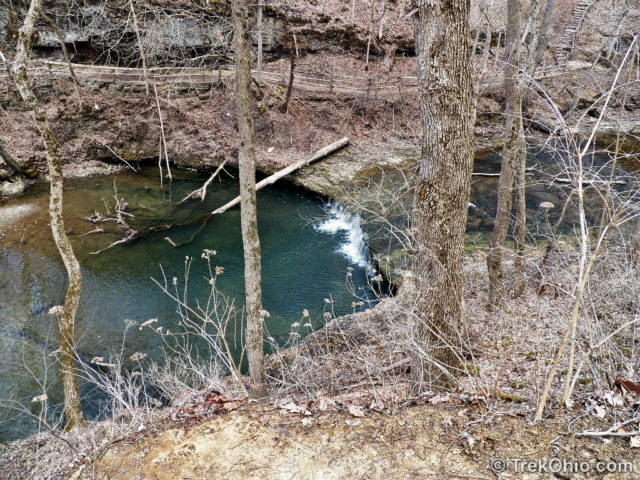
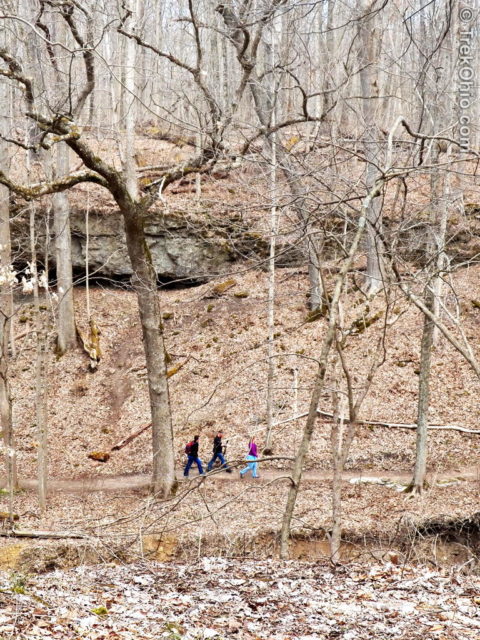
Since we were visiting Glen Helen very early in April, there still weren’t many wildflowers in full bloom. However on Birch Creek Trail I did see a number of Sharp-lobed Hepatica that were just starting to bloom.
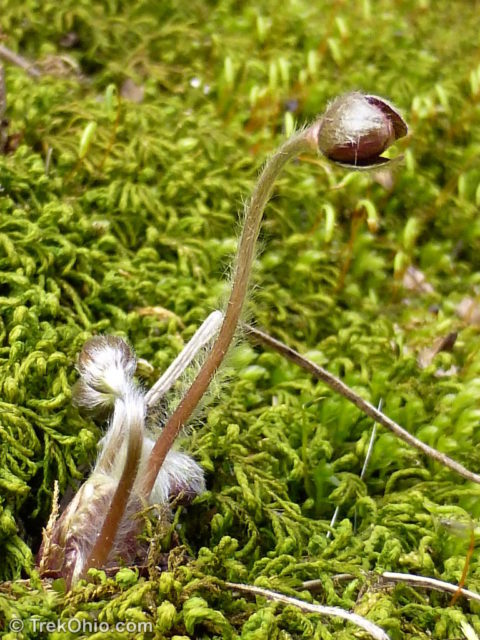
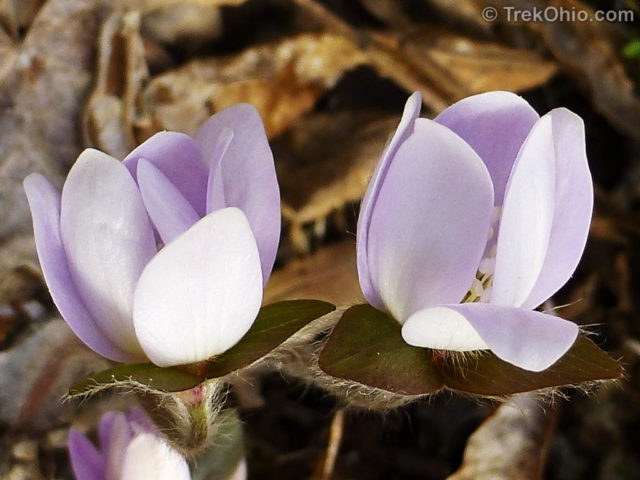
At this point we reached the stepping-stones that lead across Birch Creek. We crossed here and rejoined the Inman Trail. It wasn’t long from this point till we reached the parking lot at the preserve’s main entrance.
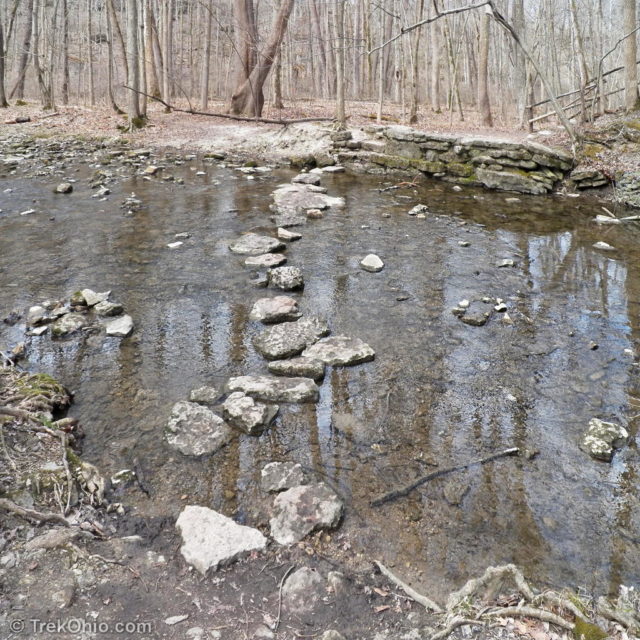
Near the parking lot there is a Visitor’s Center that wasn’t open when we arrived, but which was open at the end of our hike. We looked around center and inquired about its hours. Since it is staffed by volunteers it doesn’t have rigid hours, but generally it opens around 10 A.M. on Saturday and remains open throughout the afternoon. On Sunday it opens around noon and also remains open for the afternoon. In addition to the little shop that’s housed there, the Visitor Center has public restrooms that are only open when the center is staffed. While I was talking to a local resident, I learned that they are having graffiti problems in the town of Yellow Springs to the point were commercial establishments, like gas stations, are not providing public restrooms. So finding a public restroom in the area can be challenging.
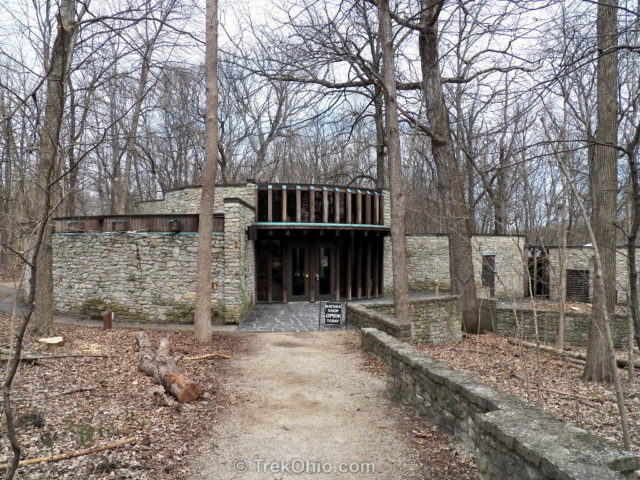
Dogs on short leases are permitted on the trails at Glen Helen, and we saw many people walking their dogs.
During a previous visit we stopped by at Glen Helen’s Raptor Center. It’s located at a different entrance to the preserve: 1075 State Route 343, Yellow Springs, Ohio. The Raptor Center both rehabilitates birds of prey and provides ongoing care for permanently handicapped birds. The handicapped birds can be viewed by the public. They live in large cages that are often covered in vines for shade. Here’s what one of the cage’s look like. It’s almost twice as big as it first looks because of the vines which envelop the rear half.
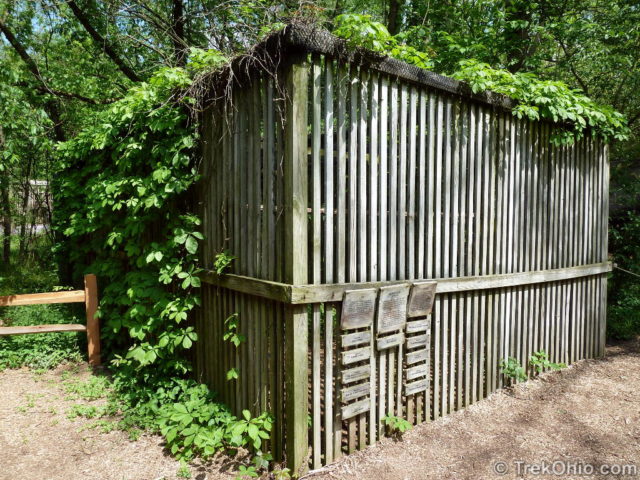
Although signs posted on the cages describe the bird’s handicaps, sometimes the injury is obvious.
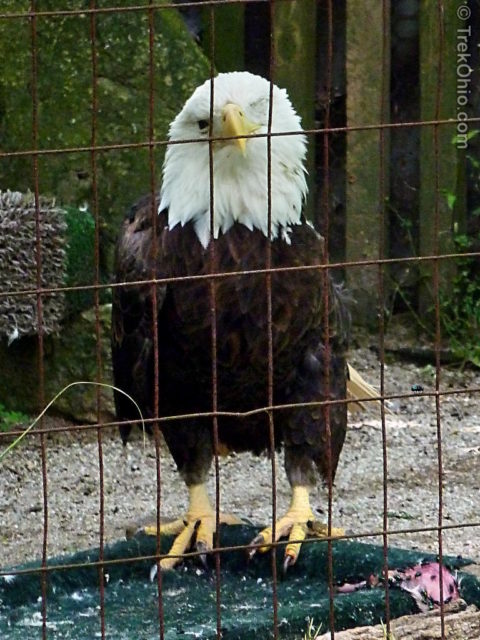
Other birds looked in better shape, but still had mobility problems.
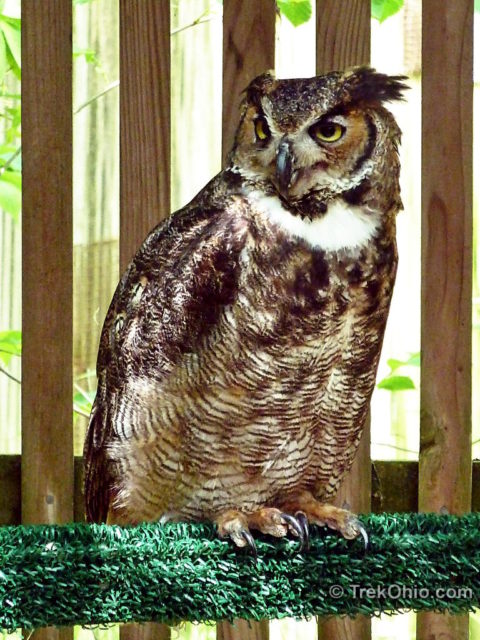
The Raptor Center is funded through donations, adoptions, and program fees. Visitors have the option of leaving a donation to help the center continue its work.
Additional information
- TrekOhio: Greene County Parks & Nature Preserves — this is the county where Glen Helen is located. This page includes links to the official site and to other parks and preserves in the region.
- TrekOhio: John Bryan State Park
- TrekOhio: Clifton Gorge State Nature Preserve
Location
The park’s main entrance is at 505 Corry Street, Yellow Springs, Ohio. By using the Google Map below you can get directions to Glen Helen from your point of origin. There is a two-dollar fee for parking near the Vistior’s Center. The fee is collected via the honor system. The parking spaces are numbered, and there is a metal box near the trail head with slots for the different parking spaces. Visitors can slip coins or folded paper bills into the slot assigned to their parking space.
If the preserve’s 25 miles of hiking trails are insufficient, the John Bryan State Park lies adjacent to Glen Helen Nature Preserve. And nearby there is also the Clifton Gorge State Nature Preserve. Previously we published illustrated descriptions of both John Bryan State Park and Clifton Gorge State Nature Preserve.
More on Greene County
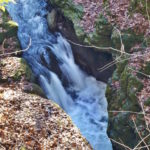
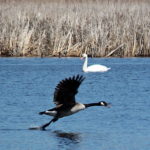
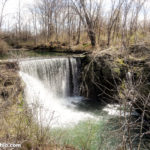
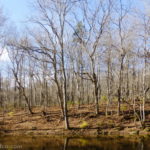
Your quote from Helen’s stone is missing “I” as in “I too serenely lie under the white oak tree”
My father helped to build the Trailside museum.
Alex, thanks for completing the quotation. It must make the preserve even more special for your family when you reflect on your father’s contribution.
Hello. I just wanted to point out that there are public restrooms just down the bike trail from the Glen, at the Train Station Visitor Center. I believe they are always open.I have never heard of any major graffiti problem in Yellow Springs. Most businesses are in very old buildings not originally designed with restrooms and the ones installed are often not adequate for frequent visitor use.
Thanks for the information about the Train Station Visitor Center. It’s possible that the person telling us about the graffiti problem wasn’t reflecting a representative viewpoint. However, when we were visiting the Cemetery Road Covered Bridge within the Glen Helen Nature Preserve, we were saddened by how badly it had been defaced by graffiti. Here are a couple of photos that we took of the bridge:
We’ve been photographing covered bridges all over Ohio (in fact, that’s our latest post). But none were as covered with graffiti as this one.
Wow, there were so many interesting things to be seen that my head is “baffled”. Those Sharp-leaved Hepaticas were very beautiful and I think that I have not seen them here. Thank You for this interesting hike thru Your great photos.
Thank you for visiting, Sartenada, and for your kind words. 🙂